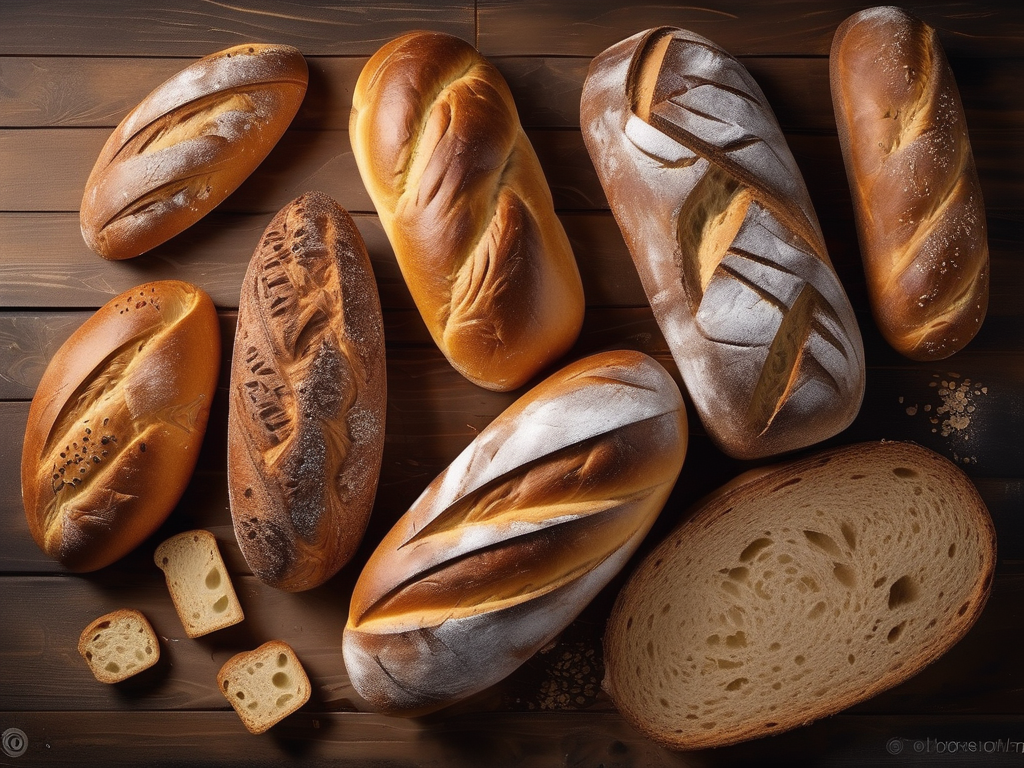
Is Your Other Bread Still Good to Eat?
Get Your Free Food Safety Cheat Sheet
30 most common foods with instant answers. Print it and stick it on your fridge—completely free!
Is Your Other Bread Still Good to Eat?
When it comes to ensuring food safety, being able to recognize when something has gone bad is crucial. In this blog post, we will discuss how to tell if Other Bread has gone bad and what steps you can take to avoid consuming spoiled food. [Other bread](/food/other bread) is a staple in many households, so it's important to know how to identify signs of spoilage to prevent foodborne illnesses. (Other bread)
Signs of Spoiled Other Bread
Visual Inspection
One of the most obvious ways to tell if your Other Bread has gone bad is by visually inspecting it. Here are some visual signs that indicate spoilage:
- Mold: If you see any green, white, or black spots on the bread, it has likely developed mold and should be discarded.
- Discoloration: If the bread has changed color significantly or has darkened in certain areas, it may no longer be safe to eat.
- Texture: Spoiled bread may feel unusually hard, mushy, or slimy to the touch.
Smell Test
Another way to determine if your Other Bread has gone bad is by smelling it. Spoiled bread will often have a musty or sour odor, indicating that it has started to spoil.
Taste Check
While it's not recommended to taste spoiled food, if you notice any unusual flavors or off-tastes in your Other Bread, it's best to err on the side of caution and discard it.
Expiration Date
Check the expiration date on the packaging of your Other Bread. If it has passed the date, it's best not to consume it, as the quality of the bread may have deteriorated.
Proper Other Bread Storage
To prolong the shelf life of your Other Bread and reduce the risk of spoilage, follow these storage tips:
- Store in a Cool, Dry Place: Keep Other Bread in a cool, dry location away from heat and moisture.
- Use Airtight Containers: Transfer Other Bread to airtight containers or resealable bags to prevent exposure to air and moisture.
- Avoid Direct Sunlight: Store Other Bread away from direct sunlight, as UV rays can accelerate spoilage.
- Refrigeration: If you won't be consuming the Other Bread within a few days, consider refrigerating it to extend its freshness.
Safety Precautions
When handling Other Bread, it's important to practice proper food safety measures to prevent contamination and spoilage:
- Wash your hands before handling Other Bread to avoid transferring bacteria.
- Use clean utensils and cutting boards when slicing Other Bread to prevent cross-contamination.
- Avoid leaving Other Bread out at room temperature for extended periods, as this can promote bacterial growth.
Conclusion
By being aware of the signs of spoilage in Other Bread and following proper storage and safety measures, you can ensure that you and your family enjoy safe and delicious bread. Remember to trust your senses and when in doubt, it's always better to discard Other Bread that you suspect may have gone bad. Stay informed, stay safe, and enjoy your meals with peace of mind! (Other bread)
Authoritative Food Safety References
These agencies and university labs inform every tip and health precaution we publish.
USDA FoodKeeper – Cold Storage Guidelines
Official refrigerator, freezer, and pantry timelines maintained by the U.S. Department of Agriculture.
Visit USDA FoodKeeperFDA Produce Safety Rule & Grower Guidance
Field-to-fridge handling practices that prevent contamination of fruits, vegetables, and leafy greens.
Visit FDA Produce SafetyCDC Foodborne Illness Prevention Hub
Surveillance-backed guidance on pathogens, symptoms, and steps to reduce foodborne illness risk.
Visit CDC Food SafetyUC Davis Postharvest Technology Center
University research detailing optimal storage atmospheres for produce after harvest.
Visit UC Davis PostharvestPenn State Extension – Home Food Preservation & Safety
Peer-reviewed extension bulletins on safe canning, chilling, and reheating practices.
Visit Penn State ExtensionGet Your Free Food Safety Cheat Sheet
30 most common foods with instant answers. Print it and stick it on your fridge—completely free! Want more? Upgrade to the complete guide with 70+ foods.
Scan your food directly and get instant safety info using our AI-powered camera feature.